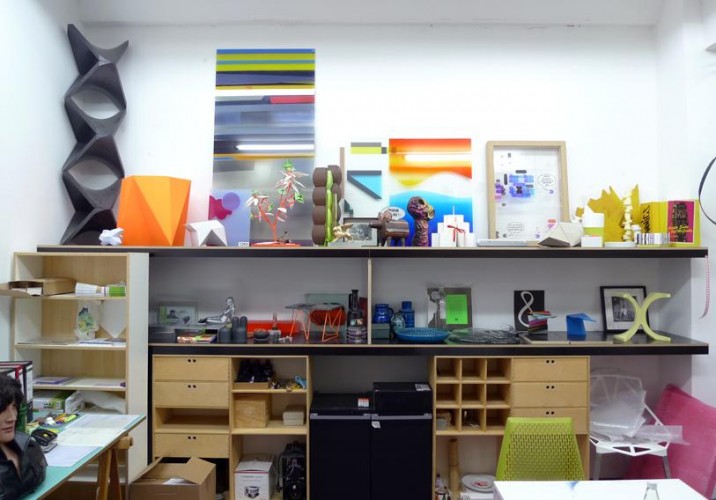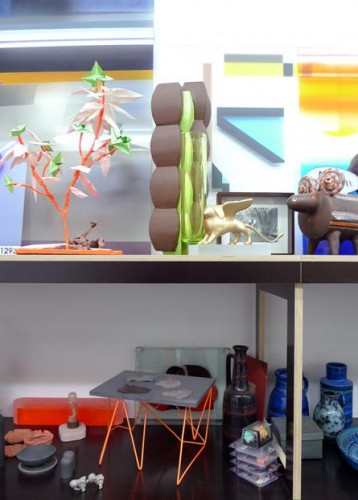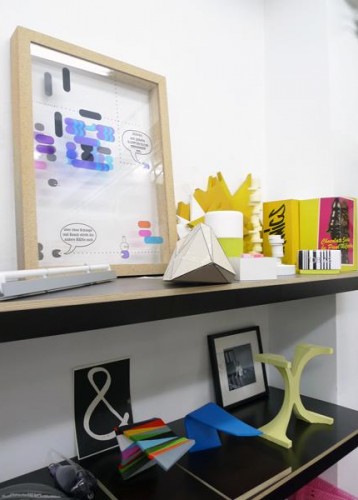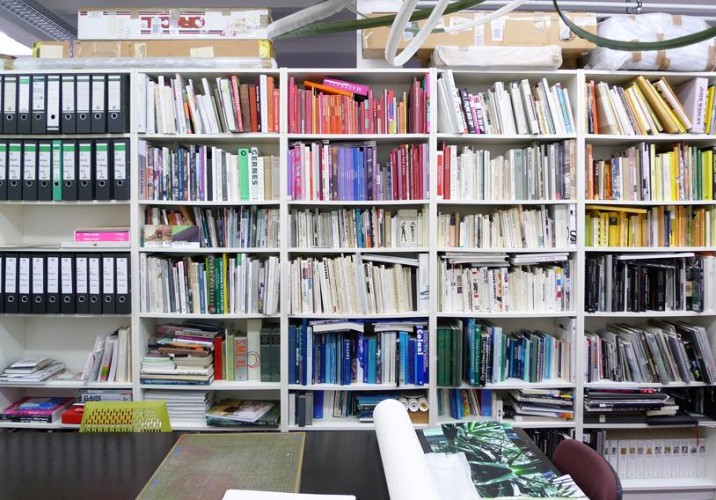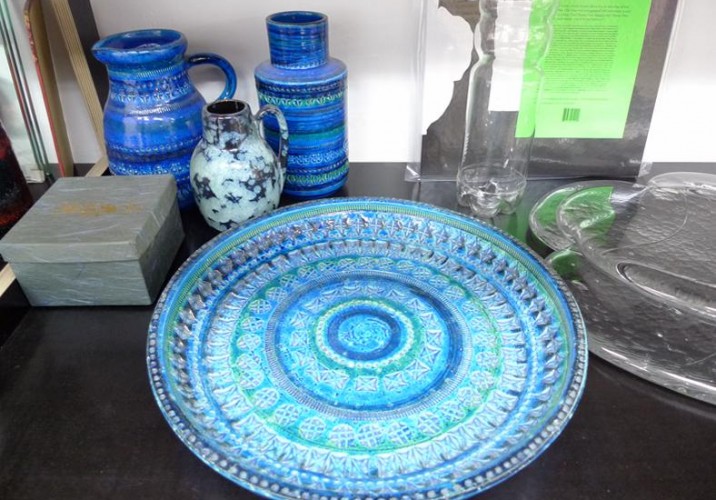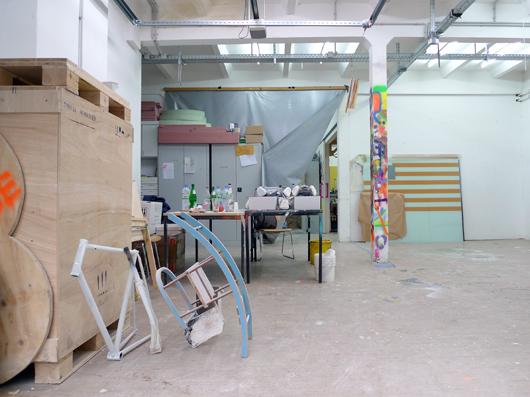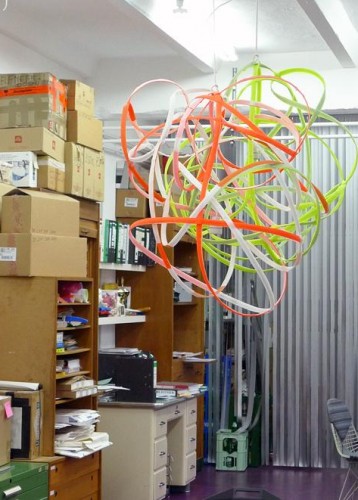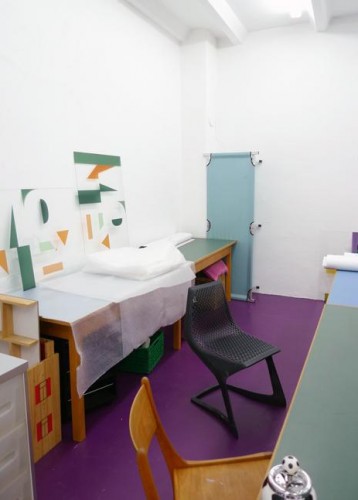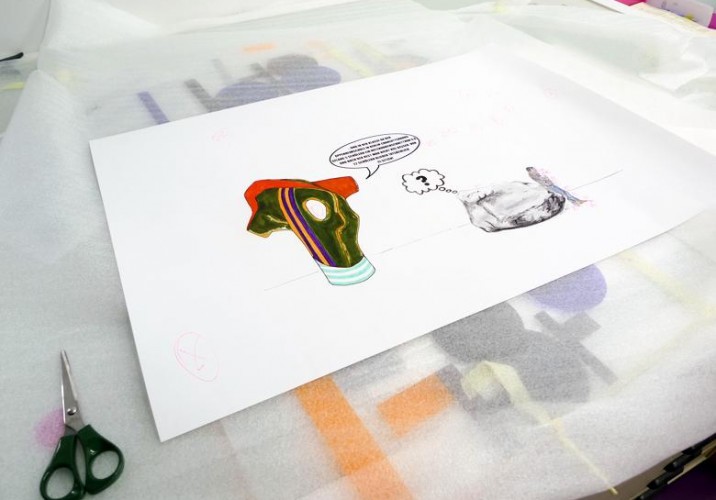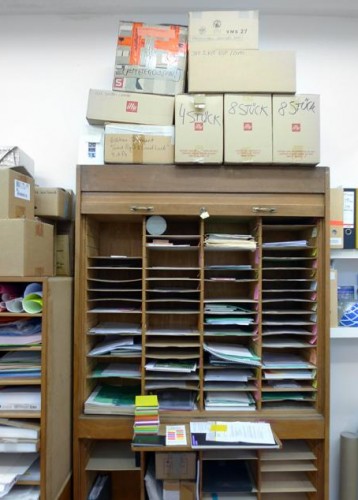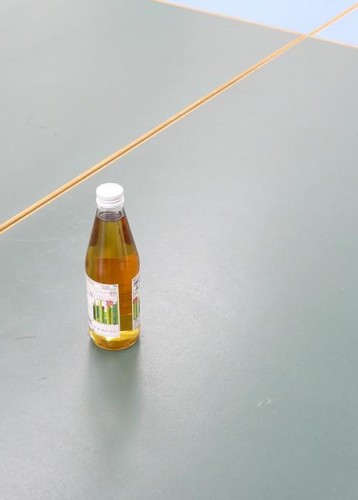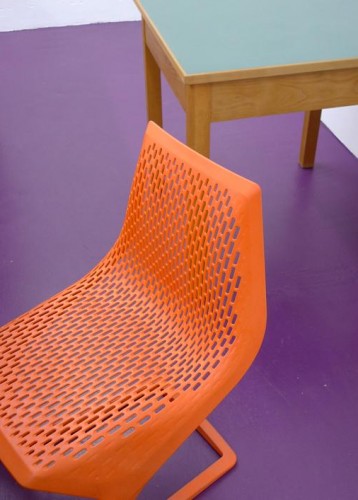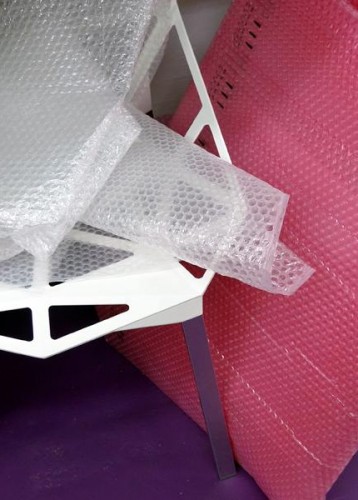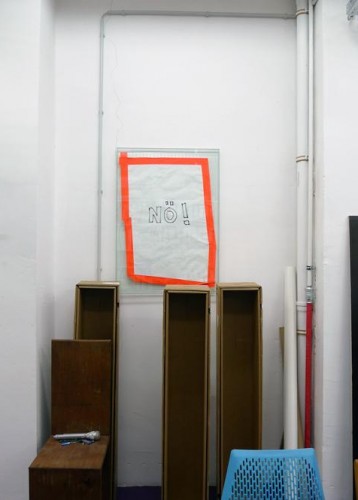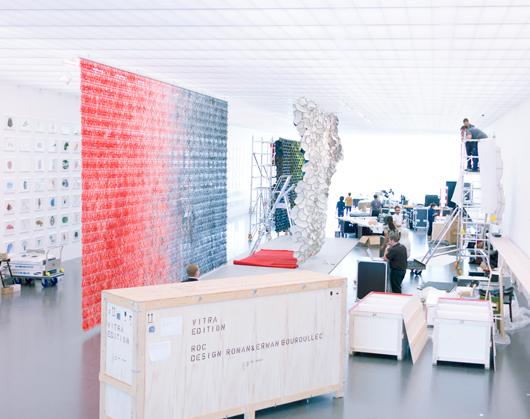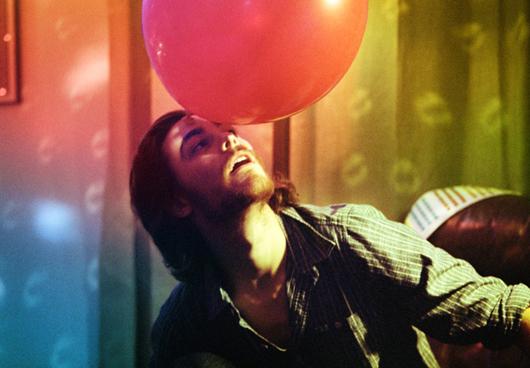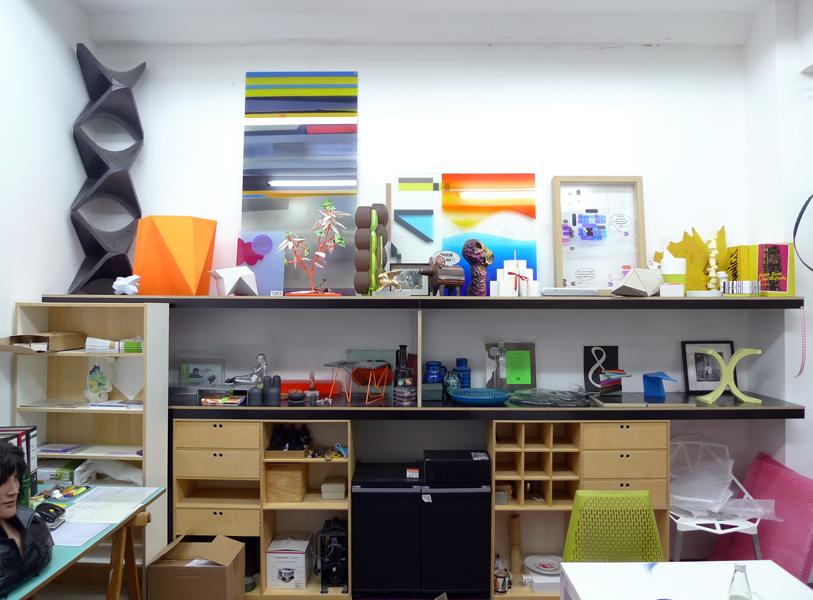
12.21.11
Sighted
Okolo Visits Tobias Rehberger’s Studio
For the team behind the Czech curatorial studio and blog Okolo — Adam Štěch, Jakub Štěch, and Matěj Činčera — their work is informed as much by the fact that they’re based in Prague, with a front-seat view of all things fascinating in Eastern European design, as it is by the fact that they love to travel. Adam Štěch has toured the region documenting amazing modernist homes, one of which he covered for Wallpaper this fall and more of which you’ll see on Sight Unseen in 2012, and the trio recently produced a print magazine devoted entirely to the city of Vienna. They also traveled to Frankfurt in November, visiting a succession of designers’ studios and photographing them for the Okolo website, slotting them in between posts about new work by Tomáš Král and the deconstruction of a Phillips auction catalog. One of our favorites was the studio of artist Tobias Rehberger, known for his striking graphical sensibility and his affinity for design and architecture, recently witnessed in the award-winning series of spaces he created in partnership with Artek; we’ve reposted it here with additional images and text that Adam prepared exclusively for Sight Unseen. Meanwhile, look out for a more extensive collaboration we’re preparing with Okolo for later this winter.
“I’m not so interested in contemporary fine art. I’m more into design and architecture. But Tobias Rehberger is something different. And also our visit to his atelier was a chance occurrence, because we had been in Frankfurt to explore design, architecture, and gastronomy for the Prague-based magazine Dolce Vita, and only once we arrived did I find out that Rehberger lives and works in Frankfurt. So we visited him in his studio and office in the centre of the city on the day when he shipped his last sculpture commissioned for Art Basel Miami.
“I like his signature style full of colors, psychedelic patterns, and crazy shapes, and his application of this style on everything from coffee cups created for Illy, to the interiors of the café at the 53rd Biennale in Venice, to his gallery installations. I was especially surprised by the ‘Slinky Springs to Fame‘ pedestrian bridge he created for the Emscherkunst 2010 project near Oberhausen in Germany — it’s fascinating how an artist can make this very large-scale architectural commission (in collaboration with architects, of course). I think Rehberger is one of the new generation of artists whose work is more and more connected with public spaces and architecture, like Eliasson for example. Maybe it’s one of the possible futures in fine art. Artist as an architect. Artist whose work is not only for galleries, but serves a public function as well.
“In Rehberger’s atelier I saw that a successful contemporary artist can work like a big company. You have a brand, and you make money. But in the case of Rehberger, everything was very natural. There was a nice office upstairs filled with design icons, artwork, books, magazines, and models. Everything together created a working and living Rehberger installation, with his signature bright colors everywhere and his typical natural chaos of things. I like his selection of furniture and how he connects it with the surrounding interior. Downstairs is a workshop where he can fabricate his sculptures, and taken together, the whole studio functions like a cathedral-building workshop from the Middle Ages — at least, that’s how it seemed to me.
“Tobias was very friendly. We only talked to him for about 15 minutes. But he gave us some tips for his favorite places around Frankfurt, and he also told me about a hidden modernist masterpiece, the villa by Richard Neutra just outside the city. More evidence that his interests stretch across the fields of art and architecture.”
